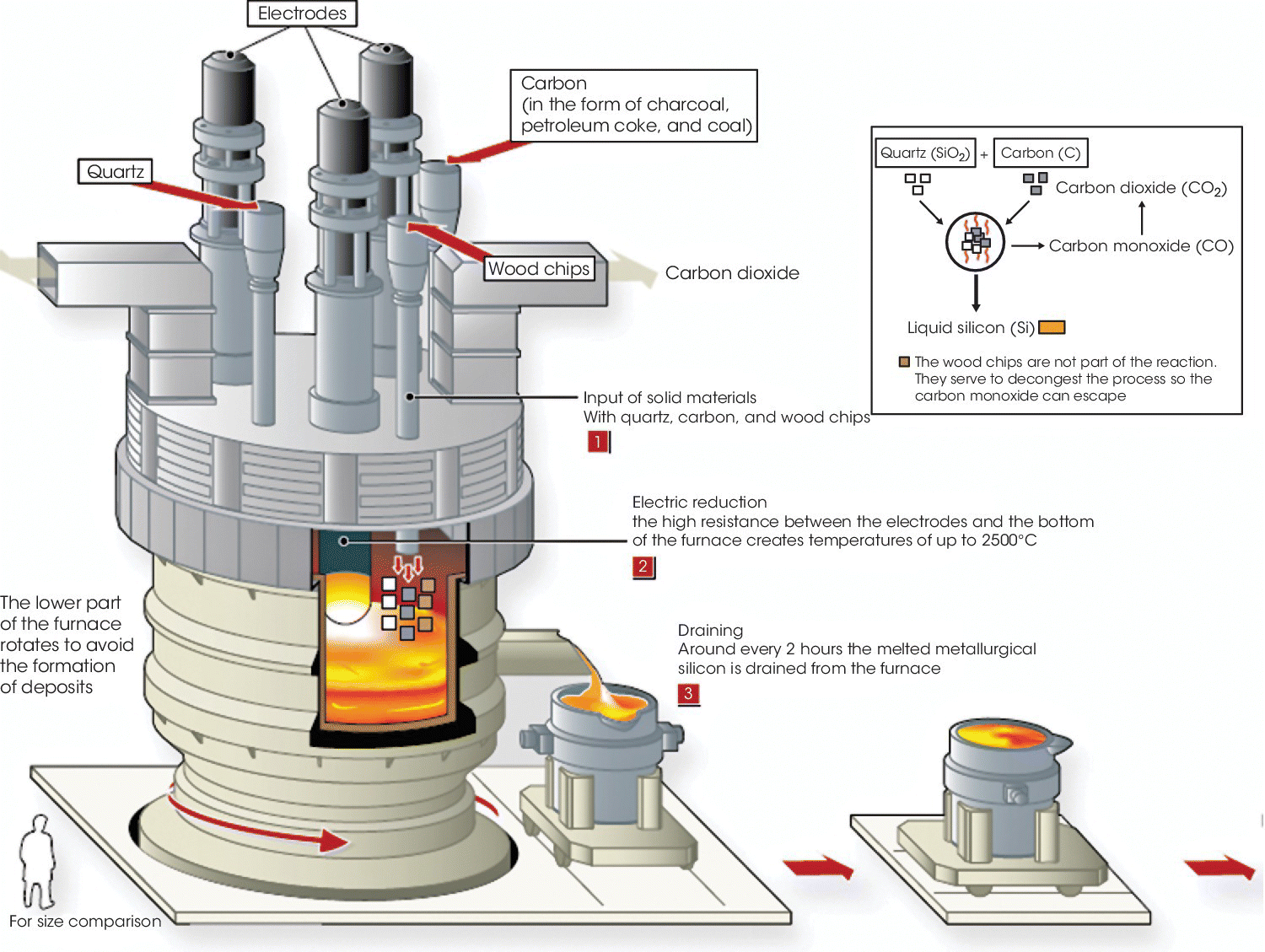6Photovoltaic Manufacturing
In this chapter we will discuss the production of silicon and thin‐film cadmium telluride (CdTe) and copper indium diselenide (CIGS) photovoltaics (PV) that comprise most of today’s market.
6.1 Production of Crystalline Si Solar Cells
The production of silicon solar cells requires silicon with high purity (typically 99.9999%, six 9s) and high crystallinity, called solar‐grade silicon. In order to produce pure and crystalline Si, the production goes over three basic manufacturing stages. The first produces metallurgical‐grade Si (MG‐Si, typically 98.5% pure) that is also used in the production of several metal alloys. The second step purifies the MG‐Si to polysilicon with five to six 9s (i.e., 99.999–99.9999%) purity, and the third stage of manufacturing is to melt poly‐Si and recondense it in a controlled fashion so that a crystalline structure is formed.
6.1.1 Production of Metallurgical Silicon
MG‐Si is produced from silicon, the most abundant element on Earth. Silicon in nature is bound with oxygen in the form of quartz (silica, SiO2). Separation of oxygen from silicon is energy intensive, requiring the reduction of SiO2 with carbon in a carbon arc furnace, producing CO2. This takes place in gigantic electric arc furnaces (Figure 6.1).

Figure 6.1 Manufacturing metallurgical silicon using an electric arc reduction furnace.
(Source: Reproduced with ...
Get Electricity from Sunlight, 2nd Edition now with the O’Reilly learning platform.
O’Reilly members experience books, live events, courses curated by job role, and more from O’Reilly and nearly 200 top publishers.

